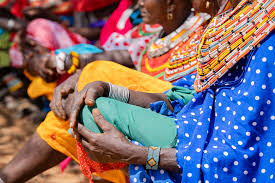Genital mutilation, also known as female genital mutilation (FGM) or female circumcision, is a deeply rooted cultural practice prevalent in various societies around the world. This essay explores the intricate web of cultural, religious, and social factors that contribute to the perpetuation of genital mutilation across different cultures.
By examining traditional beliefs, rituals, and perceptions of femininity and purity associated with the practice, we gain insights into the complex interplay of cultural norms and values that shape attitudes towards genital cutting.
Cultural Diversity and Variability
Genital mutilation is practised in diverse cultural contexts, ranging from sub-Saharan Africa to parts of Asia and the Middle East. Each culture has its own distinct beliefs, rituals, and justifications for the practice, reflecting the complexity and variability of cultural norms surrounding female sexuality and bodily integrity.
Traditional Beliefs and Rituals

In many cultures where genital mutilation is practised, the procedure is deeply embedded in traditional beliefs and rituals passed down through generations. These beliefs often centre around notions of purity, modesty, and control of female sexuality, with genital cutting seen as a rite of passage into womanhood and a marker of cultural identity.
Perceptions of Femininity and Purity
Genital mutilation is often linked to cultural perceptions of femininity and purity, with the removal or alteration of genital tissue viewed as a means of preserving chastity, ensuring marital fidelity, and safeguarding family honour. In some communities, women who have undergone genital cutting are seen as more marriageable and virtuous, while those who remain uncut may face social stigma and ostracism.
Religious Influences and Interpretations
While genital mutilation predates the major world religions, religious interpretations and justifications have contributed to its perpetuation in certain cultures. In some communities, genital cutting is believed to fulfil religious obligations or uphold religious values related to modesty, obedience, and adherence to cultural traditions.
Social Norms and Peer Pressure
Social norms and peer pressure play a significant role in perpetuating genital mutilation within communities. Pressure to conform to cultural expectations and undergo the procedure may come from family members, community leaders, and peers, reinforcing the social acceptance and normalization of genital cutting.
Gender Dynamics and Power Structures
Gender dynamics and power structures within societies also influence attitudes towards genital mutilation. In many patriarchal societies, control over women’s bodies and sexuality is closely linked to notions of male dominance and female subordination, with genital cutting serving as a means of asserting control and reinforcing gender inequalities.
Intersections with Child Marriage and Gender-Based Violence
Genital mutilation often intersects with other harmful practices such as child marriage and gender-based violence, reflecting broader patterns of gender inequality and discrimination. Girls who undergo genital cutting may be more vulnerable to early marriage, domestic abuse, and other forms of gender-based violence, perpetuating cycles of harm and oppression.
Resistance and Social Change
Despite the deeply entrenched nature of genital mutilation in some cultures, there are growing movements of resistance and social change aimed at ending the practice. Advocacy efforts led by grassroots organizations, community leaders, and survivors are challenging harmful cultural norms, raising awareness about the consequences of genital cutting, and promoting alternative rites of passage that celebrate girls’ autonomy and bodily integrity.
Globalization and Changing Attitudes
Globalization and increased access to information have also influenced attitudes towards genital mutilation, with younger generations questioning the validity and morality of the practice. Education, media campaigns, and legal reforms are contributing to shifting cultural norms and attitudes, creating space for dialogue and debate about the rights of girls and women to bodily autonomy and freedom from harm.
In conclusion, genital mutilation is a complex cultural practice shaped by a multitude of factors, including traditional beliefs, religious interpretations, social norms, and gender dynamics.
Understanding the cultural context surrounding genital cutting is essential for addressing the root causes of the practice and promoting meaningful social change.
By challenging harmful beliefs and traditions, empowering communities to reject genital mutilation, and supporting alternative rites of passage that affirm girls’ dignity and rights, we can work towards ending this harmful practice and promoting gender equality and human rights for all.
Related Tags
Taiwo Olawuyi
Taiwo Olawuyi is a highly dedicated and passionate professional blogger, renowned for her ability to create captivating, informative, and engaging content in the realm of health and wellness. She holds a Bachelor's degree in Political Science from Olabisi Onabanjo University and a Master's degree in Adult Education from the prestigious University of Ibadan. Her profound passion for health and wellness, coupled with her unwavering dedication to her audience, serves as a constant source of inspiration and enlightenment for readers worldwide.










